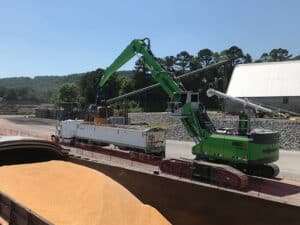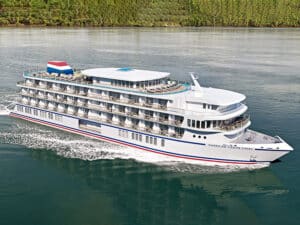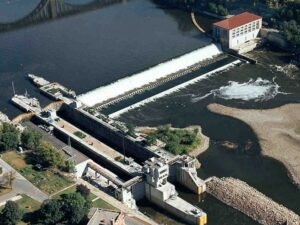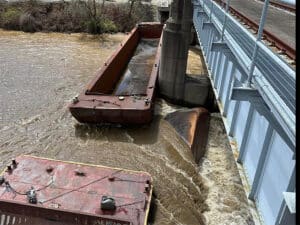
High waters and adverse weather impact Seaway traffic levels
Written by Marine Log Staff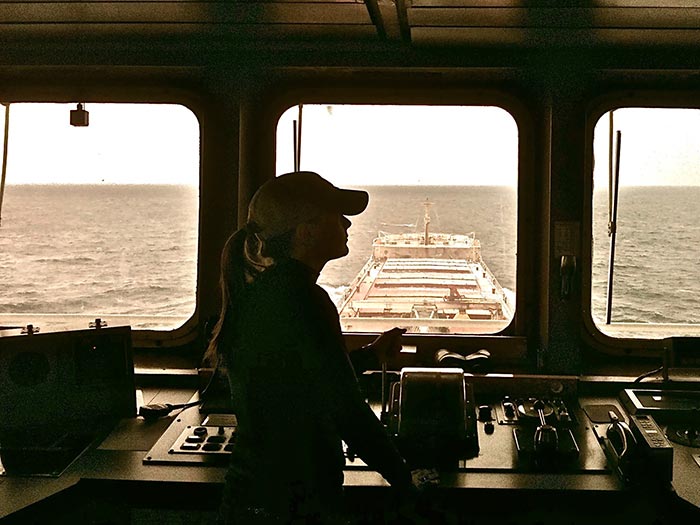
Image copyright Chamber of Marine Commerce
Bruce Burrows, President of the Chamber of Marine Commerce, has unveiled a 2020 wish list for legislative and policymakers to support the growth of Great Lakes-St. Lawrence and coastal shipping with a top priority being climate resiliency to deal with high-water levels.
The Chamber of Marine Commerce is a bi-national association that represents more than 130 marine industry stakeholders including major Canadian and American shippers, ports, terminals and marine service providers, as well as domestic and international ship owners.
Overall cargo on the St. Lawrence Seaway totaled 38 million metric tons in 2019, a decrease of 7% attributed to trade conflicts, challenging navigational conditions due to high waters and adverse weather impacts on key cargoes such as grain.
“The challenges of the 2019 shipping season underline the critical importance of protecting the future integrity of the Great Lakes-St. Lawrence waterway as a reliable and efficient trade and transportation corridor for the United States and Canada,” sayd Burrows. “High water levels are negatively impacting residents and businesses, including the marine shipping sector that transports cargo through the St. Lawrence Seaway, and we need to work together with the International Joint Commission (IJC) and governments to conduct a proper study into water levels and their causes, and to develop a resiliency plan that can address stakeholder needs into the future.”
Throughout 2019 there was continued pressure on the IJC’s International Lake Ontario-St. Lawrence River Board, to lower Lake Ontario levels by raising water outflow at the Moses-Saunders dam to unsafe navigation levels that would have shut down Seaway shipping.
Marine shipping worked diligently with stakeholders for a solution to ensure safe navigation at record outflow levels for five months last year to help lower the Lake, taking on 26 mitigation measures that caused shipping delays, lost cargo business and millions of dollars of extra operating costs. The Chamber also supports the River Board’s recent actions to increase outflow levels at the dam during the winter, in order to lower Lake levels as much as possible before Spring.
“We would also like to see commercial navigation interests as members of the International Lake Ontario-St. Lawrence River Board to work alongside recent appointees representing community interests,” says Burrows. “Many different industries including agriculture, manufacturing, fuel supply, construction and the mining sector depend on the Great Lakes-Seaway transportation system, supporting 238,000 jobs and US$35 billion (C$45.4 billion) in economic activity in Canada and the U.S.”
Other legislative and policy priorities for 2020
Ensure that U.S. and Canadian governments continue to invest in maritime infrastructure and advance Coast Guard asset renewal. The CMC will be asking for the medium-term refurbished Canadian Coast Guard vessels and longer-term new builds announced in 2019 to be used to help resource ice-breaking in the Great Lakes, the Seaway and the lower St. Lawrence River, where cargo deliveries have been stalled or delayed in past winters and springs due to service breakdowns and a lack of assets.
Pursue a harmonized and practical approach to ballast water regulations aimed at domestic fleets. The Canadian government has put forward regulations that would require domestic fleets to install ballast water treatment systems despite the fact that no technology currently exists that reliably operates in Great Lakes conditions and trading patterns. At the same time, the United States Coast Guard is developing regulations that are not aligned with the technology standards or timelines of the Canadian regulations. We need one regulatory approach for the bi-national Great Lakes region that levels the playing field and recognizes the challenges faced by the domestic fleets in Canada and the United States.
New legislation to modernize Canada’s pilotage system for commercial ships was finally passed in June 2019, which holds promise to improve the efficiency and competitiveness of marine transportation while still ensuring the highest standards of safety. The Chamber will now be urging the Canadian government to form a “National Advisory Board” to gain stakeholder input into the ongoing reform of policies and supporting regulations. Its priorities will be to have policy makers review pilotage requirements (such as double piloting or mandatory zones) while taking into account the many technological advancements over the past 40 years. The Chamber would also like to see improvements made to the pilot certification programs, which allow domestic ships’ masters and senior navigation officers to pilot their own vessels. It is important for the focus of these programs to be on onboard training and evaluation and that they be as efficient as possible.

